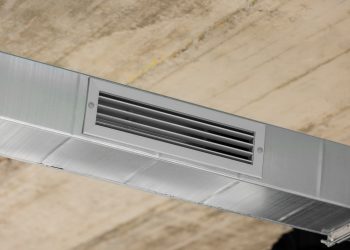Foot health is often forgotten when discussing a person’s overall well-being and the health of their heart. However, how you take care of your feet plays a vital role in leading a healthy lifestyle.
In fact, you might even be amazed to know that foot conditions have long-term effects on cardiovascular health
Let’s examine this correlation further and highlight its significance as part of your foot care routine.
Foot Conditions and Cardiovascular Health Are Connected.
Poor foot health can result from several sources.
These sources may arise from:
- Wearing the wrong shoes or shoes that are too tight – both which can lead to several problems with the feet.
For example, a bunion is an abnormal growth that develops on the big toe when too much pressure is placed on the metatarsophalangeal joint. This joint is where the bone of the big toe and bone of the foot intersect.
Ingrown toenails are another painful foot problem that develops from wearing footwear that’s too tight.
Wearing the wrong shoes can lead to blisters as well.
Corns, in some cases, may need surgical removal. They may result from bunions or ill-fitting shoes. The thickened patches of skin can also become painful if they’re not treated or you don’t switch to more comfortable shoes.
Hammertoe and mallet toe are two more examples of foot conditions that result from wearing badly fitting shoes.
Hammertoe is diagnosed when there is an abnormal bend in the middle joint of the toe. Mallet toe develops when a bend appears in the joint closest to the toenail. The bends, in either of these cases, usually appear in the second, third, or fourth toes.
You can alleviate the pain and pressure of hammertoe or mallet toe by switching your footwear or using shoe inserts or similar devices. Surgery is often used to correct the condition or reduce foot pressure if less invasive treatments don’t work.
- Conditions that affect the feet, like diabetes (which may lead to nerve damage in the feet (diabetic neuropathy), or athlete’s foot (a highly contagious fungal infection resulting from wearing too warm and damp shoes) also can eventually impact the heart.
- Plantar fasciitis is another foot condition that is brought about by wearing footwear that does not fit well or by excessive abuse on the feet.
It’s not entirely clear what triggers the inflammatory condition. However, having tight calf muscles or high arches sometimes are to blame. Being obese or over-stressing the heel may cause the heel pain as well.
That’s why it’s important that you wear the right shoes and pamper your feet regularly. Take care of your feet and they’ll take care of you so you’re heart-healthy, happy, and active.
If you don’t take preventive measures with respect to foot care, you may experience problems with nerve damage, blood flow, or inflammation – all potential precursors to more significant issues with the heart and blood vessels.
Peripheral Artery Damage and The Foot-Heart Connection
Not only can foot conditions cause problems with circulation, problems with circulation may lead to further issues with both the feet and heart.
For example, Peripheral Artery Disease (PAD) affects more than 6 million American adults yearly.
Therefore, PAD is also one of the important connections between foot health and the heart. PAD occurs when plaque forms in your arteries – blood vessels that supply blood to your limbs, leading to reduced circulation and potential damage to the feet.
Symptoms may include pain or cramping during physical activities as well as slow-healing sores on the feet.
PAD not only restricts blood flow to your extremities but also increases your risk for coronary artery disease (CAD), one of the primary causes of heart failure and heart attacks.
Prevention and management of PAD requires certain lifestyle modifications. These alterations include exercising regularly, maintaining a healthy weight, quitting smoking and managing any underlying conditions like high cholesterol or diabetes.
Varicose Veins
Another foot and leg condition that can signal heart issues are varicose veins. These unsightly and sometimes twisted veins usually appear when faulty valves cannot effectively return blood back to the heart.
Varicose veins can develop as we get older, as the vein walls and valves lose their elasticity. Women often have more problems with varicose veins because of fluctuating hormone levels. The condition is hereditary and runs in families as well.
Treatment options include lifestyle modifications, compression therapy or surgical treatments, including sclerotherapy, endovenous thermal ablation, or vein stripping.
Prevent Foot Problems and Promote Better Heart Health
Care and prevention of foot problems is indeed vital in protecting heart health. Below are some foot care tips for your overall health and well-being.
1. Practice proper foot hygiene by washing your feet daily and trimming your toenails regularly.
2. Soak your feet once a week in a foot bath to soothe any pains and soften the cuticles of your toe nails. Reduce the toxins in the skin by adding Epsom salt.
3. Select the appropriate footwear – shoes, sandals, sneakers, or sandals that offer support, added cushioning and an ideal fit. If you’re unsure how to get the right fit, visit your podiatrist for footwear recommendations.
3. Engage in regular exercises designed to strengthen and increase circulation for maximum foot health and mobility. Make sure you choose exercises that don’t place added stress on your feet. Make sure you can navigate easily in the footwear you choose.
Walking is an excellent exercise – that is, as long as you wear the right footwear. You might also consider buying an exercise machine such as an exercise bike or a stepper.
4. Keep a close watch on your feet for signs of PAD or varicose veins, and promptly seek medical advice if you have leg cramping or foot pain.
5. See your doctor and manage chronic conditions like diabetes, high cholesterol or hypertension to decrease further risks to your overall health and heart complications.
Conclusion
Taking good care of your feet is an integral component of wellness and should never be ignored. By understanding the correlation between foot conditions and cardio-pulmonary functioning, you can live a longer and more productive and healthful life.
Author: Donna Ryan
Author Bio: Donna Ryan is a health writer and journalist. You can reach her at donnar668@gmail.com with questions or inquiries.














